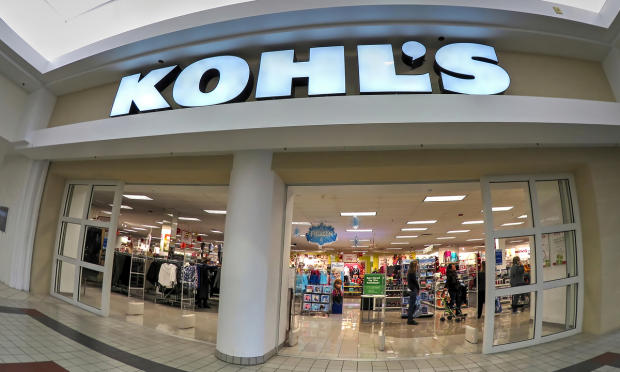Is In-Store a Breeding Ground for Impulse Buying?

While the return to in-store experiences always seems to be in flux these days, the value the store brings to the customer remains a question. Is the ability to get a consumer into your store mean you have a customer who has intent? Going further, one might ask: Is in-store a breeding ground for impulse buying?
Consumers exhibit a wide range of purchasing behaviors. One individual with inadequate money management skills might enter a store and impulsively accumulate credit card debt without much thought. Another consumer might view the in-store experience as an opportunity to physically interact with a product, gather information, and seek clarification before making a well-considered purchase decision.
While it is true that both types of buyers exist, there is always a potential for impulse purchases to arise among even the most thoughtful buyer.
Here’s why: When a consumer makes the conscious decision to step foot inside a store, it often indicates a level of purpose or interest in the products or services offered. This initial intent sets the stage for potential buying opportunities and presents an environment ripe for impulsive purchases.
The in-store experience can elicit impulsive buying. The presence of products allows customers to engage their senses. The ability to see, touch, and try products firsthand can ignite a sense of curiosity and desire, leading to spontaneous purchases.
Affirming this notion is Kohl’s, as reported by PYMNTS in May. Despite experiencing a nearly 20% decline in digital sales during Q1 2023, Kohl’s saw a positive impact on its in-store performance thanks to its shop-in-shop collaboration with Sephora.
During an earnings call with investors and analysts May 24, Kohl’s CEO Tom Kingsbury, who assumed leadership in February following a disappointing Q4 2022, outlined a number of initiatives that the retailer prioritized in Q1 and intends to further develop over the course of the year.
Kingsbury noted that the rise in in-store footfall and higher units per transaction compensated for a decrease in average ticket size, which was influenced by the retailer’s clearance actions. However, as Chief Financial Officer Jill Timm noted, “Net sales were down 3.3%. Store sales were up low single-digit percent, driven by strong Sephora at Kohl’s growth, as well as our clearance actions. Digital sales were down 19.6% [compared] to last year.”
Read more: Kohl’s Digital Sales Drop Nearly 20% in Q1 as Sephora Helps Improve In-Store Results
Additionally, the in-store environment provides an opportunity for brands to create immersive experiences and strategies to stimulate impulse buying. Thoughtfully designed visual merchandising, enticing product displays, and strategic positioning can capture shoppers’ attention, evoke emotions, and trigger impulsive decisions. Moreover, interactions with knowledgeable sales associates can further influence buying impulses.
The fact is more than 85% of U.S. retail sales still occur in the physical world, not online. Moreover, these sales are of higher quality since consumers can interact with a product, resulting in reduced return rates. The trend became evident during the pandemic, when eCommerce sales surged, but so did returns. According to DHL, eCommerce soared to $26.7 trillion in 2020, 19% of global retail sales. Additionally, their research revealed that online returns in the U.S. escalated from 10% in January 2020 to 18% in January 2021.
Read more: Retailers Give In-Store Media an Interactive Twist to Boost Basket Size
However, impulse buying is not confined to brick-and-mortar stores. Online retailers leverage tactics such as limited-time offers, personalized product recommendations, and user-generated content to replicate the excitement and urgency often associated with in-store impulse buying. Artificial intelligence (AI) can not only encourage purchases but also instill confidence in buyers, thereby reducing returns.
Read more: Retailers Pin Hopes on AI to Increase Sales, Decrease Returns
In fact, beauty brand Laneige has embraced the metaverse to showcase its newest collection through a partnership with virtual store-building platform Obsess, an experiential commerce company.
Laneige offers customers an immersive experience through its virtual store, where they can explore the brand’s skincare collections in a variety of environments, including clouds, underwater settings, and carousels. The virtual space also features Laneige Lab, inviting customers to explore the product ingredients.
Julien Bouzitat, the chief marketing officer of AmorePacific U.S., Laneige’s parent company, emphasized the craftsmanship behind the virtual stores, highlighting their role as a tool for customer engagement. These virtual experiences are designed to showcase Laneige’s scientific expertise.
Read more: Beauty Brand Laneige Ditches Sensory Experience for Virtual Shopping
The potential for in-store impulse buying is influenced by various factors, including the nature of the product, the shopping environment, and individual consumer preferences. Different product categories may elicit stronger impulses, such as items with a lower price point or those that cater to consumers’ desires for novelty or self-indulgence.
PYMNTS reported this week that in-store purchases are facing a threat from the growing wave of eCommerce. According to the report, eCommerce is projected to grow in the coming 12 months. About 30% of consumers anticipate an increase in their online retail purchases during this period, while 32% anticipate purchasing more groceries through online channels.
Read more: In-Store Retail Purchases Threatened by Oncoming eCommerce Wave

